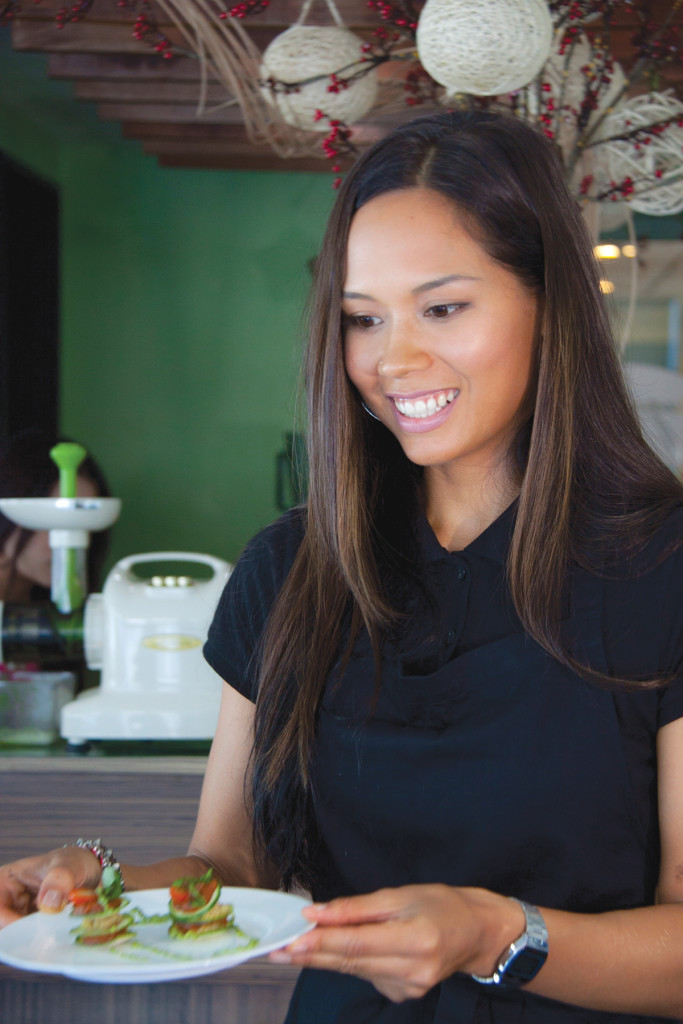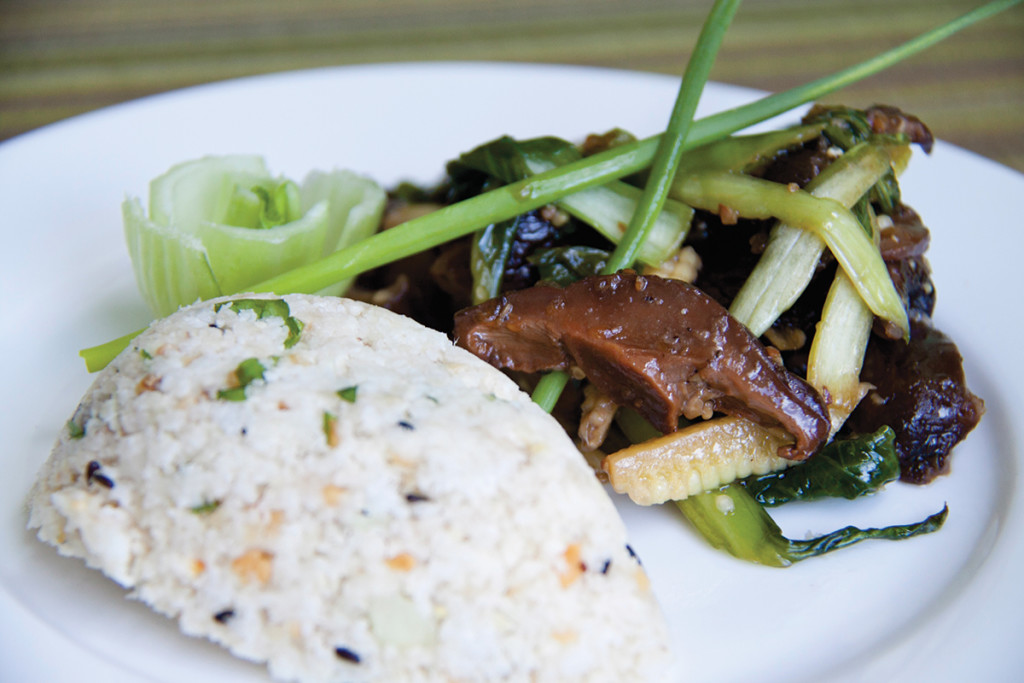While you had all the reasons to feast and feast over the holidays, now that it’s the start of the new year, it’s time to do a bit of damage control and give our gut some time and space to recover!
For this year’s food cravings, turn your eyes to Sugarleaf — a pioneer in all natural and organic dining and a promoter of healthy eating and quality living lifestyles.
By KRISTEL DACUMOS LAGORZA
To help us first understand the importance of eating raw, raw food gourmet chef and lifestyle coach Mona Lisa Neuboeck introduces the concept of “the life force” to an intimate media group. The life force is loosely defined as the “live enzymes and nutrients” that are naturally present in fruits, roots and vegetables. Though our bodies already have enzymes to help specifically with metabolism, live foods lend an extra hand by essentially digesting themselves.
Once raw food is digested, the body is able to absorb 100 percent of its goodness unlike the measly 20 percent which is left after conventional cooking. With conventional cooking, what we have may be a tasty dish, but it is a lifeless one. The body will also need to work double time to digest cooked food. (Note: a piece of steak takes up to four days to digest, essentially rotting inside the intestines, whereas fruits and vegetables are out of the body in just 12 hours.)
Though eating raw food and becoming vegetarians have their good points, the overriding thought on everyone’s carnivorous minds is “How could I turn vegan? Healthy food rarely tastes good!” Chef Mona Lisa, reading our hesitant and begrudging faces, spends no time enchanting us with the yummy possibilities of raw food. She even goes so far as to say that raw cuisine can be as flavorful and healthier than the gourmet dishes that we enjoy in five-star restaurants – and we can make them ourselves!

(Chef Mona Lisa)
Mona Lisa shows us how and pulls out from behind the counter her weapons of choice: a knife, a high-powered blender and a juicer.
Chef Mona Lisa whips up first the grapefruit ginger blast smoothie, which she shares is her and her partner’s favorite breakfast drink. Compact with vitamins and nutrients, the grapefruit ginger blast is said to cure even the most intense of hangovers. To make the beautiful fruit blend, she chucks in a few pieces of ginger, grapefruit, lemon zest, apples, vanilla beans, bananas for that yogurt texture, cayenne pepper, which aids in fat metabolism, and ice into the high-powered blender. And after a few good seconds, what we have is a light, frothy citrus medley that can wake up any tired body and palate.
At the time of this interview, we flip through the handouts that Angelo Songco, the marketing and business development head of Sugarleaf restaurant, distributed beforehand, Mona Lisa shares that there is so much room to experiment with flavors when “cooking” with raw food, which is why one shouldn’t be too stringent with measurements. “Close the handouts, have fun and rely on your taste buds,” she instructs.
Apart from blending and juicing, raw food cuisine also entails a lot of marinating. One has the flexibility to prepare food ahead of time, even a day or two. Mona Lisa brings to the table her delightful dishes which she prepared the day before – a lovely pesto and tomato “raw-violi,” baby bok choy shitake un-stir fry and raw daikon un-fried rice.
The raw-violi is Mona Lisa’s interpretation of the Italian favorite but instead of pasta, pesto paste and sun dried tomatoes are sandwiched between thin slices of cucumber. Drizzled with golden extra virgin olive oil, the raw-violi makes a beautiful entrée.

(One of Sugarleaf’s delicious creations)
The baby bok choy with shitake mushrooms and the daikon un-fried rice, on the other hand, satiate the Filipino palate for something more “substantial.” Visually, the bok choy resembles beef and broccoli but one cannot mistake the taste. A little sweet, a little sour but undoubtedly satisfying, the explosion of fresh flavors reverberate on the taste buds. The daikon un-fried rice, made from turnips and daikon, which tastes like the coconut meat after its been squeezed of its juices, complements the “meaty” viand.
To end the meal on a sweet note, we relish a comforting slice of the sweet potato mocha torte pie topped with dark, cacao chips and dried blueberries. “I can eat this forever!” we all exclaim. Desserts, undoubtedly, is where the strength of raw food lies.
Mona Lisa and Angelo understand that it might be a tall order for some Filipinos to quit cold turkey on our favorite lechon and sisig. But even for the most hardcore meat-eaters, turning vegan is possible. Take for example, Mona Lisa. This renowned raw food chef ironically hails from a long line of famous Innsbruck butchers in Austria. From being surrounded by beef to becoming anti-meat, Mona Lisa proves that despite a carnivorous upbringing, it’s never too late to start eating healthy.
Whether you decide to turn vegetarian or remain a carnivore, what is important, Chef Mona Lisa says, is that we lessen our consumption of food filled with empty calories, preservatives and health-sabotaging substances and try to incorporate more raw food into our diet. Living life starts with eating right.
This article was originally published in PeopleAsia‘s April – May 2012 issue.






